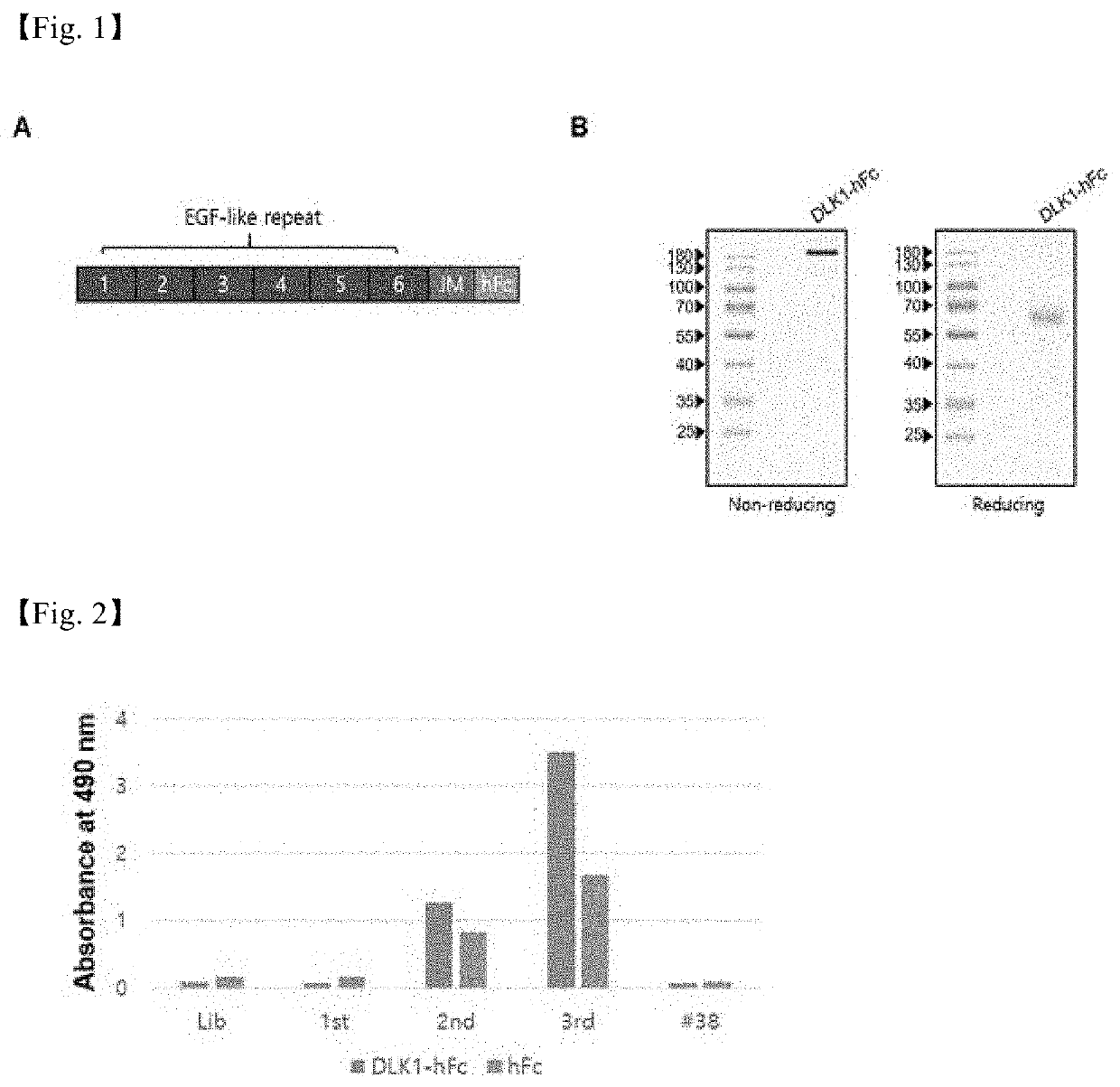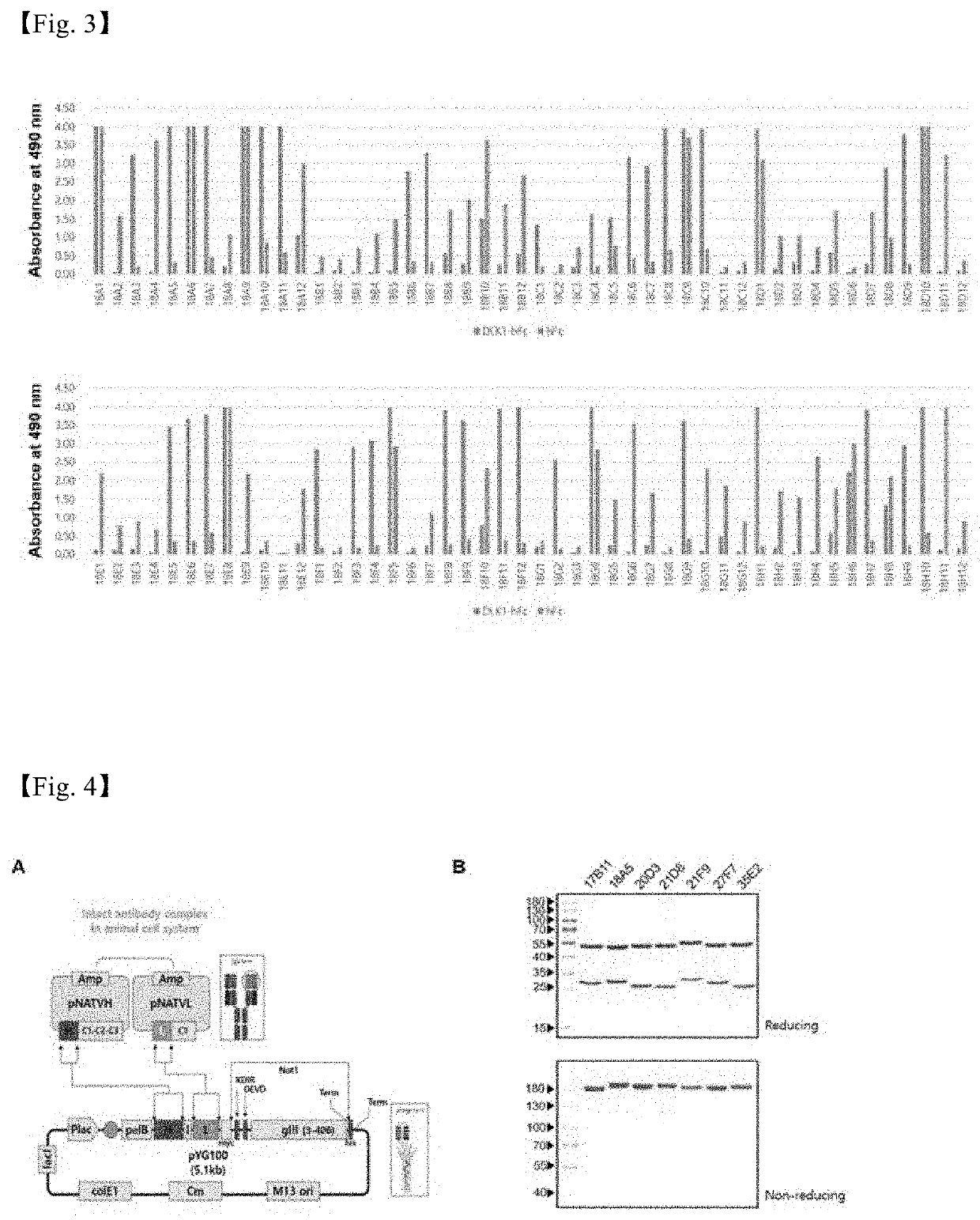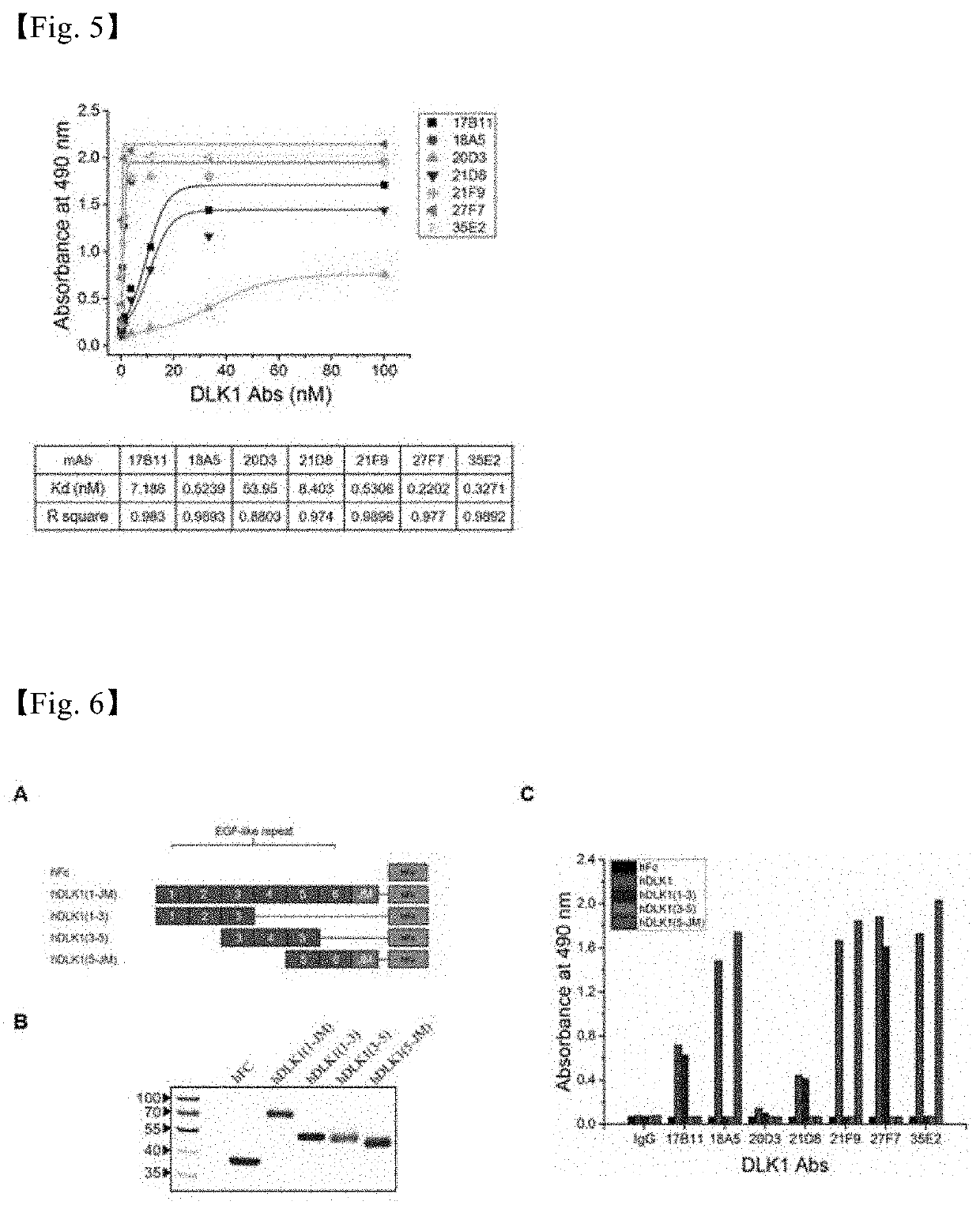Antibody Against Human DLK1 and Use Thereof
a technology of anti-dlk1 and dlk1, which is applied in the field of anti-dlk1 homolog (dlk1), can solve the problems of damage to normal tissues, drug efficacy does not meet the requirements, and the demand for treatment has not yet been satisfied
- Summary
- Abstract
- Description
- Claims
- Application Information
AI Technical Summary
Benefits of technology
Problems solved by technology
Method used
Image
Examples
example 2
and Production of Human Anti-DLK1 Monoclonal Antibody
example 2-1
ough Phage Display
[0159]Bacteria were infected with a human scFv phage display library having a variety of 2.7×1010 as a human antibody library phage, incubated at 30° C. for 16 hours, and then centrifuged (5,000 rpm, 10 minutes, 4° C.), and the resulting supernatant was concentrated with polyethylene glycol (PEG) and dissolved in PBS buffer to prepare a human scFv phage display library.
[0160]DLK1-hFc (100 μg / 3 ml) contained in a coating buffer (15 mM Na2CO3, 35 mM NaHCO3, 3 mM sodium azide, pH 9.6) was fixed on the surface of an immunosorbent tube (Nunc, USA) at 4° C. overnight and blocked at room temperature for 2 hours with skim milk (BD Biosciences, USA) dissolved in 4% PBS. Meanwhile, phages were infected with a human scFv phage display library having a variety of 2.7×1010, the library phages were placed in an immunosorbent tube and then reacted at room temperature for 2 hours, and washed 20 times with 5 ml of PBS-T (0.05% Tween-20 in PBS), and only the scFv phages specifically...
example 2-2
Selection
[0161]Escherichia coli were infected with phages obtained from tertiary panning with high binding capacity, and each monoclone was then incubated in a 96-deep well plate (Bionia), and a monoclonal scFv phage present in the supernatant was subjected to phage-ELISA to select monoclones. First, 100 ng of DLK1 protein per well was seeded into an immuno-96 microwell plate using a coating buffer and surface-fixed at 4° C. overnight, PBS-T containing 200 μl of 4% skim milk powder was added to all wells, and then reacted for 1 hour at 37° C. to prevent nonspecific protein binding. Then, 200 μl of each cultured single scFv phage was added and reacted at 37° C. for 2 hours, washed three times with 200 μl of PBS-T, diluted at 1:2000 with mouse anti-M13-HPR antibody (GE healthcare, UK) conjugated with HRP (horseradish peroxidase), and reacted at 37° C. for 1 hour. The resulting product was washed three times with PBS-T again, and 10 μl of 30% hydrogen peroxide (H2O2) and a tablet of 4 ...
PUM
| Property | Measurement | Unit |
|---|---|---|
| temperature | aaaaa | aaaaa |
| pH | aaaaa | aaaaa |
| pH | aaaaa | aaaaa |
Abstract
Description
Claims
Application Information
 Login to View More
Login to View More - R&D
- Intellectual Property
- Life Sciences
- Materials
- Tech Scout
- Unparalleled Data Quality
- Higher Quality Content
- 60% Fewer Hallucinations
Browse by: Latest US Patents, China's latest patents, Technical Efficacy Thesaurus, Application Domain, Technology Topic, Popular Technical Reports.
© 2025 PatSnap. All rights reserved.Legal|Privacy policy|Modern Slavery Act Transparency Statement|Sitemap|About US| Contact US: help@patsnap.com



